1. Weidinger S, Novak N. Atopic dermatitis. Lancet. 2016; 387(10023):1109–1122. PMID:
26377142.

2. Yang G, Seok JK, Kang HC, Cho YY, Lee HS, Lee JY. Skin barrier abnormalities and immune dysfunction in atopic dermatitis. Int J Mol Sci. 2020; 21(8):2867.

3. Schmidt SA, Olsen M, Schmidt M, Vestergaard C, Langan SM, Deleuran MS, et al. Atopic dermatitis and risk of atrial fibrillation or flutter: A 35-year follow-up study. J Am Acad Dermatol. 2020; 83(6):1616–1624. PMID:
31442537.

4. Jung HJ, Lee DH, Park MY, Ahn J. Cardiovascular comorbidities of atopic dermatitis: using National Health Insurance data in Korea. Allergy Asthma Clin Immunol. 2021; 17(1):94. PMID:
34551806.

5. Abuabara K, Yu AM, Okhovat JP, Allen IE, Langan SM. The prevalence of atopic dermatitis beyond childhood: a systematic review and meta-analysis of longitudinal studies. Allergy. 2018; 73(3):696–704. PMID:
28960336.

6. Ha J, Lee SW, Yon DK. Ten-year trends and prevalence of asthma, allergic rhinitis, and atopic dermatitis among the Korean population, 2008–2017. Clin Exp Pediatr. 2020; 63(7):278–283. PMID:
32023407.

7. Hanifin JM. Diagnostic features of atopic dermatitis. Acta Derm Venereol. 1980; 92:44–47.
8. Roduit C, Frei R, Depner M, Karvonen AM, Renz H, Braun-Fahrländer C, et al. Phenotypes of atopic dermatitis depending on the timing of onset and progression in childhood. JAMA Pediatr. 2017; 171(7):655–662. PMID:
28531273.

9. Lewis-Jones MS, Finlay AY. The Children’s Dermatology Life Quality Index (CDLQI): initial validation and practical use. Br J Dermatol. 1995; 132(6):942–949. PMID:
7662573.

10. Bieber T, D’Erme AM, Akdis CA, Traidl-Hoffmann C, Lauener R, Schäppi G, et al. Clinical phenotypes and endophenotypes of atopic dermatitis: Where are we, and where should we go? J Allergy Clin Immunol. 2017; 139(4):4S. S58–S64. PMID:
28390478.

11. Saunes M, Øien T, Dotterud CK, Romundstad PR, Storrø O, Holmen TL, et al. Early eczema and the risk of childhood asthma: a prospective, population-based study. BMC Pediatr. 2012; 12(1):168. PMID:
23095804.

12. von Kobyletzki LB, Bornehag CG, Hasselgren M, Larsson M, Lindström CB, Svensson Å. Eczema in early childhood is strongly associated with the development of asthma and rhinitis in a prospective cohort. BMC Dermatol. 2012; 12(1):11. PMID:
22839963.

13. Carlsten C, Dimich-Ward H, Ferguson A, Watson W, Rousseau R, Dybuncio A, et al. Atopic dermatitis in a high-risk cohort: natural history, associated allergic outcomes, and risk factors. Ann Allergy Asthma Immunol. 2013; 110(1):24–28. PMID:
23244654.

14. Tran MM, Lefebvre DL, Dharma C, Dai D, Lou WYW, Subbarao P, et al. Predicting the atopic march: Results from the Canadian Healthy Infant Longitudinal Development Study. J Allergy Clin Immunol. 2018; 141(2):601–607 e8. PMID:
29153857.

15. Tran MM, Sears MR. Can the atopic march be predicted? Ann Allergy Asthma Immunol. 2018; 120(2):115–116. PMID:
29413331.

16. Brough HA, Nadeau KC, Sindher SB, Alkotob SS, Chan S, Bahnson HT, et al. Epicutaneous sensitization in the development of food allergy: what is the evidence and how can this be prevented? Allergy. 2020; 75(9):2185–2205. PMID:
32249942.

17. Beck LA, Leung DY. Allergen sensitization through the skin induces systemic allergic responses. J Allergy Clin Immunol. 2000; 106(5):Suppl. S258–S263. PMID:
11080741.

18. Boralevi F, Hubiche T, Léauté-Labrèze C, Saubusse E, Fayon M, Roul S, et al. Epicutaneous aeroallergen sensitization in atopic dermatitis infants - determining the role of epidermal barrier impairment. Allergy. 2008; 63(2):205–210. PMID:
18186810.

19. Tham EH, Rajakulendran M, Lee BW, Van Bever HP. Epicutaneous sensitization to food allergens in atopic dermatitis: What do we know? Pediatr Allergy Immunol. 2020; 31(1):7–18. PMID:
31541586.

20. Deckers J, Sichien D, Plantinga M, Van Moorleghem J, Vanheerswynghels M, Hoste E, et al. Epicutaneous sensitization to house dust mite allergen requires interferon regulatory factor 4-dependent dermal dendritic cells. J Allergy Clin Immunol. 2017; 140(5):1364–1377.e2. PMID:
28189772.

21. Schoos AM, Chawes BL, Bønnelykke K, Stokholm J, Rasmussen MA, Bisgaard H. Increasing severity of early-onset atopic dermatitis, but not late-onset, associates with development of aeroallergen sensitization and allergic rhinitis in childhood. Allergy. 2021; 00:1–9.

22. Zhang Z, Li H, Zhang H, Cheng R, Li M, Huang L, et al. Factors associated with persistence of early-onset atopic dermatitis up to the age of 12 years: a prospective cohort study in China. Eur J Dermatol. 2021; 31(3):403–408. PMID:
34309525.

23. Tham EH, Leung DY. Mechanisms by which atopic dermatitis predisposes to food allergy and the atopic march. Allergy Asthma Immunol Res. 2019; 11(1):4–15. PMID:
30479073.

24. Jun M, Wang HY, Lee S, Choi E, Lee H, Choi EH. Differences in genetic variations between treatable and recalcitrant atopic dermatitis in Korean. Allergy Asthma Immunol Res. 2018; 10(3):244–252. PMID:
29676071.

25. Güngör D, Nadaud P, LaPergola CC, Dreibelbis C, Wong YP, Terry N, et al. Infant milk-feeding practices and food allergies, allergic rhinitis, atopic dermatitis, and asthma throughout the life span: a systematic review. Am J Clin Nutr. 2019; 109(Suppl 7):772S–799S. PMID:
30982870.

26. Silverberg JI, Vakharia PP, Chopra R, Sacotte R, Patel N, Immaneni S, et al. Phenotypical differences of childhood- and adult-onset atopic dermatitis. J Allergy Clin Immunol Pract. 2018; 6(4):1306–1312. PMID:
29133223.

27. Yew YW, Thyssen JP, Silverberg JI. A systematic review and meta-analysis of the regional and age-related differences in atopic dermatitis clinical characteristics. J Am Acad Dermatol. 2019; 80(2):390–401. PMID:
30287309.

28. Silverberg JI, Margolis DJ, Boguniewicz M, Fonacier L, Grayson MH, Ong PY, et al. Distribution of atopic dermatitis lesions in United States adults. J Eur Acad Dermatol Venereol. 2019; 33(7):1341–1348. PMID:
30883885.

29. Son JH, Chung BY, Kim HO, Park CW. Clinical features of atopic dermatitis in adults are different according to onset. J Korean Med Sci. 2017; 32(8):1360–1366. PMID:
28665074.

30. Kim KH, Hwang JH, Park KC. Periauricular eczematization in childhood atopic dermatitis. Pediatr Dermatol. 1996; 13(4):278–280. PMID:
8844743.

31. Kim DH, Li K, Seo SJ, Jo SJ, Yim HW, Kim CM, et al. Quality of life and disease severity are correlated in patients with atopic dermatitis. J Korean Med Sci. 2012; 27(11):1327–1332. PMID:
23166413.

32. Ferrucci SM, Tavecchio S, Angileri L, Surace T, Berti E, Buoli M. Factors associated with affective symptoms and quality of life in patients with atopic dermatitis. Acta Derm Venereol. 2021; 101(11):adv00590. PMID:
34518893.

33. Maksimović N, Janković S, Marinković J, Sekulović LK, Zivković Z, Spirić VT. Health-related quality of life in patients with atopic dermatitis. J Dermatol. 2012; 39(1):42–47. PMID:
22044078.
34. Yum HY, Kim HH, Kim HJ, Kim WK, Lee SY, Li K, et al. Current management of moderate-to-severe atopic dermatitis: a survey of allergists, pediatric allergists and dermatologists in Korea. Allergy Asthma Immunol Res. 2018; 10(3):253–259. PMID:
29676072.

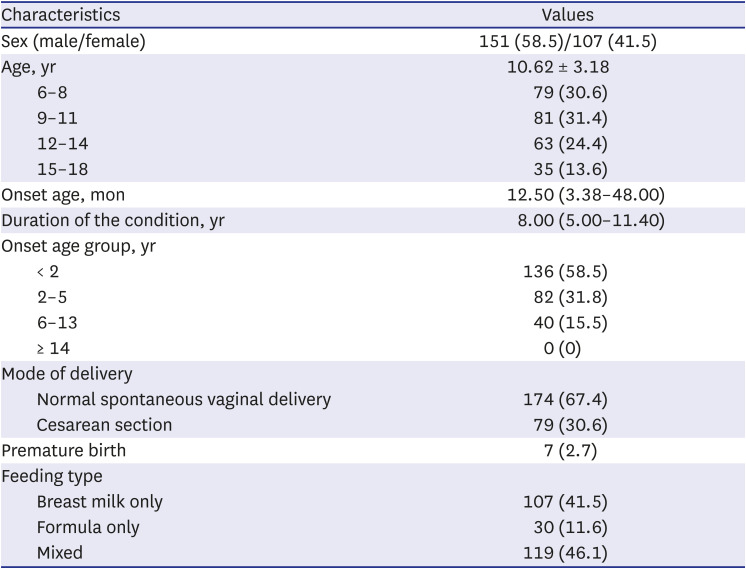
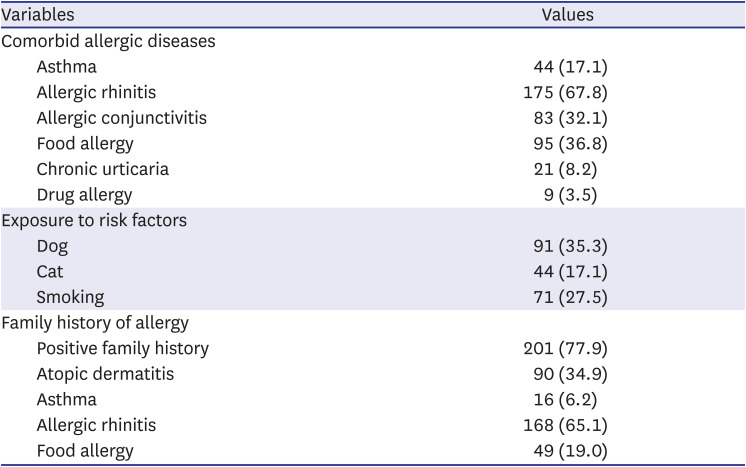
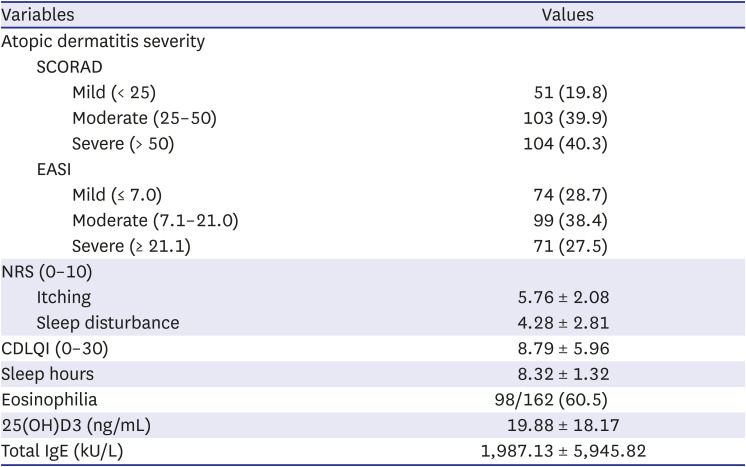
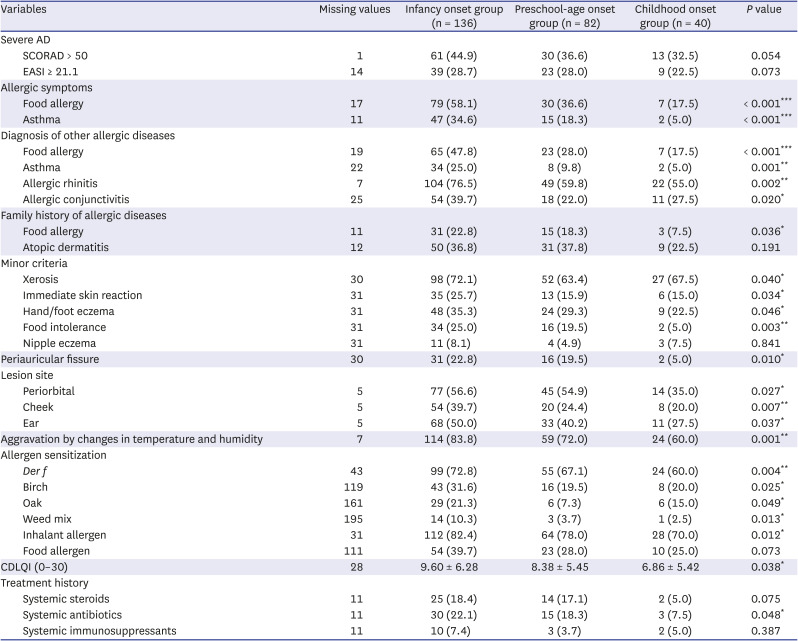

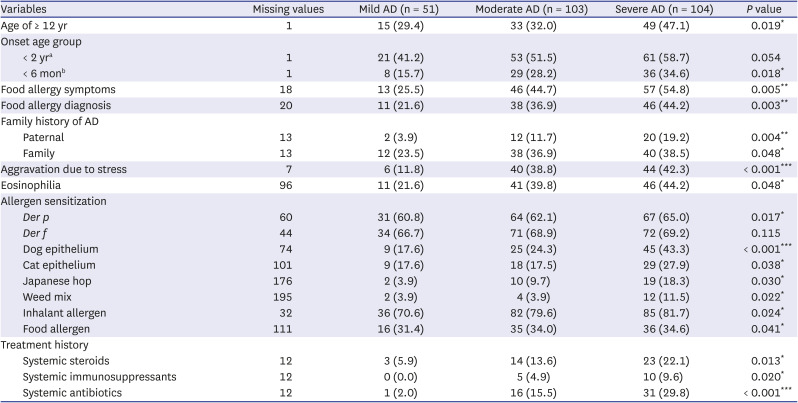




 PDF
PDF Citation
Citation Print
Print



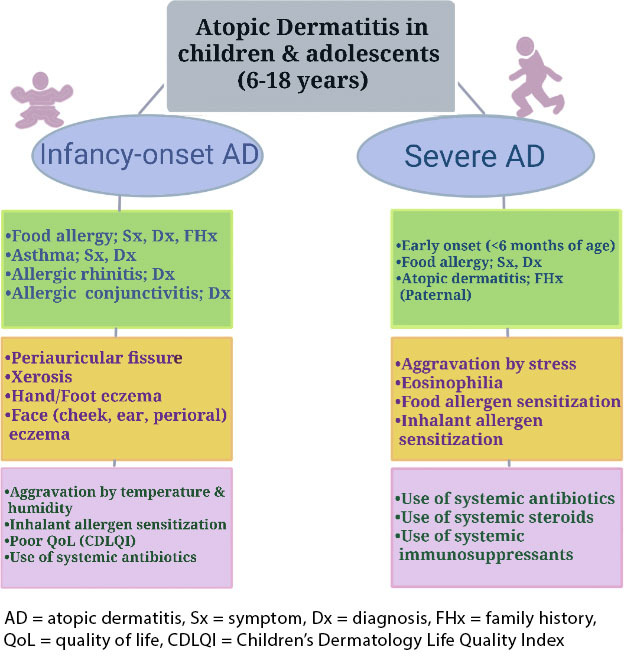
 XML Download
XML Download